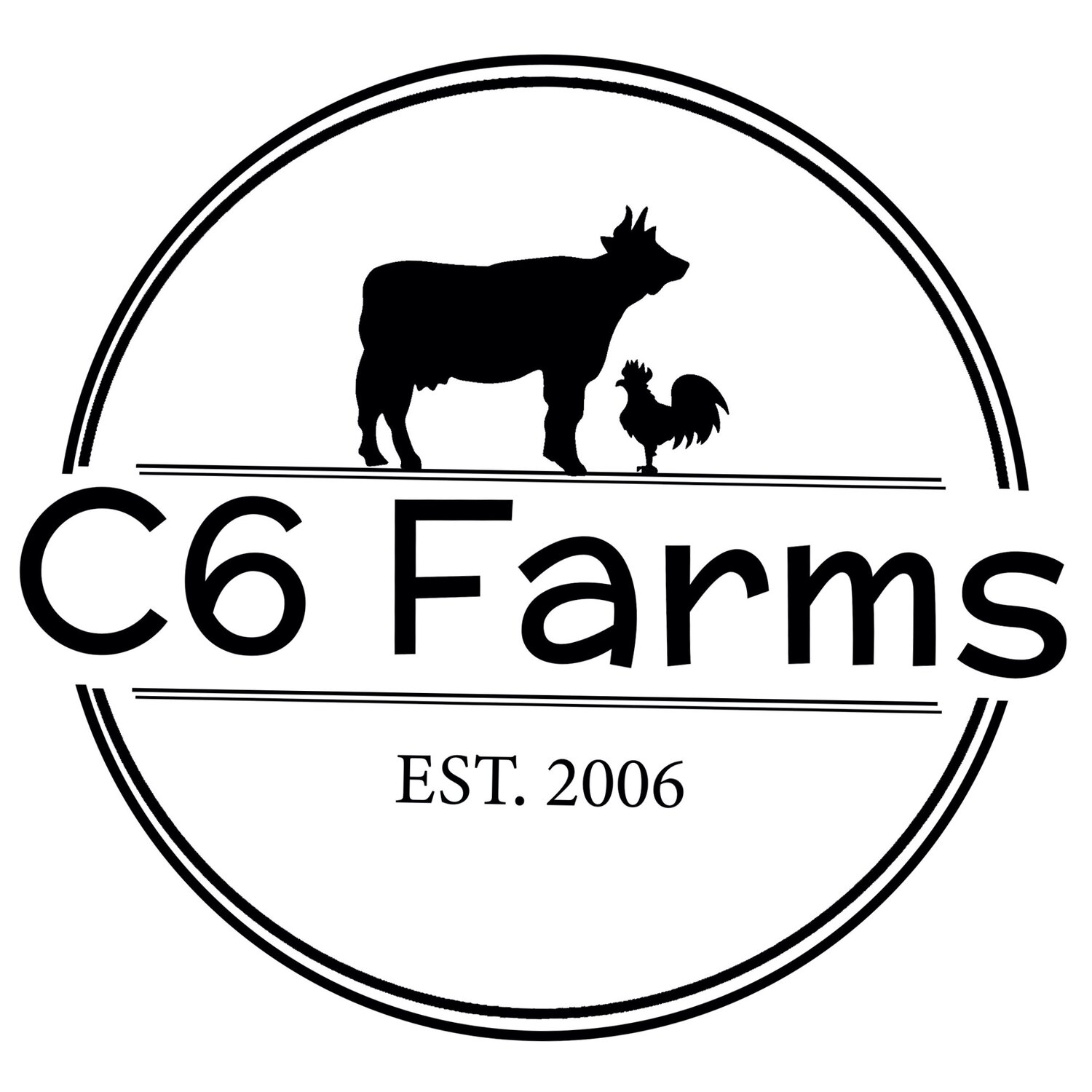Pastured Poultry
We originally started raising Cornish Cross “meat” chickens on pasture in a “Salatin style” chicken tractor. We would bring in day old chicks and raise them in a brooder for 3 weeks, then finish them in the chicken tractor for 5 weeks. While in the chicken tractor, the chickens were moved daily for the first three weeks, then twice each day for the last two weeks. By moving them in this way, they always had access to fresh grass to eat and a fresh, clean, carbonaceous diaper beneath them. The pastured poultry operation is located in a pasture that is also rotationally grazed by our cattle and continuously grazed by our flock of sheep.
Always trying to improve……we are experimenting with a much more open concept using electrified poultry netting to enclose and protect the birds instead of the chicken tractor structure. The typical “Salatin style” chicken tractor is 10’ x 12’ and is designed for 75 birds giving each bird 1.6 sq-ft. The open air method we are experimenting with offers less predator protection but gives each bird much more room to roam, graze, and act like a chicken. We’ve had some losses due to predators (hawks) with the new open system so we’re still fine tuning the process.
The “experts” say the combination of the fresh grass, increased exercise, and fresh air make the difference between the broiler house birds and the pasture raised birds we are raising. I just know the pasture raised birds taste better. If you’ve ever been in a commercial broiler house, you know about the strong ammonia urine/chicken litter odor that will take your breath away, and that there is very little room for each bird to move, and that they do not have fresh grass to eat or scratch around on. If I were a chicken, there is no doubt that I would rather grow up on our farm.
We presently feed our birds a blend from a local feed mill that consists of corn, soybeans, oats, calcium, kelp meal, and a poultry vitamin pack, …….a total of 6 ingredients. The corn, soybean, & oats are all grown in the Arklatex. We considered using a popular non Soy – non GMO broiler blend but decided against it since the label listed a total of 39 ingredients. When the soybeans and corn are removed to obtain the non Soy - non GMO classification, something has to be added to provide the missing protein…….so feed mills commonly add fish meal and/or peanut meal, and always use a chemical called lysine. We are not necessarily against the non soy – non GMO feed ration but will probably stick with the conventional feed made with locally grown ingredients until someone can convince us that the other is better for us and our customers.





